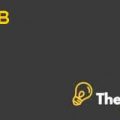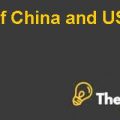
Deal Making In Troubled Waters: The ABN AMRO Takeover Case Solution
Analyze ABN AMRO’s strategic solution in 2006. What were ABN’s Strengths and weaknesses at that time? What are its key strategic challenges? Why was it looking for strategic partner?
ABN Bank and AMRO bank are the largest two commercial banks in Netherlands, both of these banks merged in 1991. Both banks internationally expanded in Europe, United States, Brazil, and Asia. After the merger, they started expanding in other countries and invested in more than 4500 branches in 53 countries at the year–end of 2006. It was the third largest bank and a diversified group with a leading franchise in the Netherlands. The share of ABN AMRO was under performing but the bank has competitive advantage in the wealthy individual and a mid-size enterprise sector. In Asia, the bank started to offer commercial and retail products to diverse the client base and was one the largest global financial institution global based on the basis of assets. and ranked 10 in Europe and 15 worldwide.
Additionally, the CEO of ABN AMRO bank introduced strategies in order to organize the bank’s activities into three global and large strategic business units, such as wholesale client, private client, and asset management. The main reason of organizing the bank was that bank can improve the services in order to serve its clients effectively,the increased the transparency and accountability for the value creation. In 2004, it created a Cross- SBU consumer segment and a cross-commercial segment in order to deliver high quality solutions to its clients all around the world.
The goal of the bank was to become the top five peer group by severing its customers effectively, but the bank was not able to become the top five peer group.The reason for this is that the bank was facing three challenges.
- It was facing a greater challenge in that its businesses were not going the way they were anticipated to go over the four-year cycle.
- The bank underestimated the impact of the required restructuring programmers for the businesses.
- The target set by the bank was too high, which was difficult to attain
During 2006, the managing and supervisory boards of ABN AMRO realized that bank would not be able to become a top five peer group with its existing strategies. Therefore,the CEO of bank decided to re organize the bank. Since the bank was previously serving consumer and commercial clients worldwide.In order to reorganize,the CEO added three global product business units,which are global market, transaction, and banking &asset management.However at the end of 2006, the position of the peer group dropped from 11 to 16.Thus,the CEO conclude that if the bank goes stand-alone, it would not bring the bank to the top five peer group rating.It is impossible for the bank,so the CEO of the bank decided to form a partnership with any bank in order to become enter the top five peer group list. The bank merged with Barclays. During this merger with the Barclays, the CEO was so busy in the Barclays deal, he didn’t expect that Consortium bank will come with a higher bid. This is the biggest challenge faced by the bank, as the bid with Barclays bank was about 41% in cash and 59% in RBS, while the bid with Consortium banks was about 93% in cash and 7% in RBS. During this period, the economy was facing subprime mortgage crisis.There is a lack of confidence in the global money markets and government paper...............................
This is just a sample partial case solution. Please place the order on the website to order your own originally done case solution.













